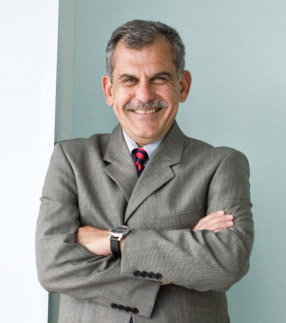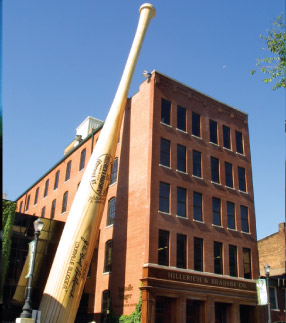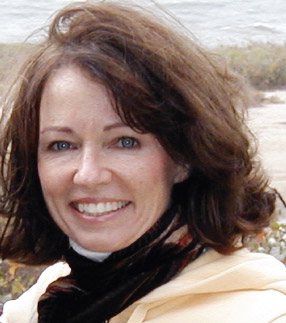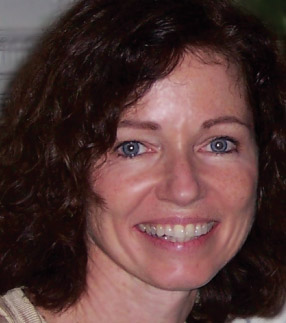Asee Today
PRESIDENT’S LETTER
Diversity: A National Imperative
A broader workforce will benefit engineering and bolster American leadership.
On January 12, I attended the Roundtable on Practical Approaches to Attracting and Retaining Women in Science, Technology, Engineering, and Mathematics (STEM) Fields, sponsored by the Society of Women Engineers (SWE) in Washington, D.C. Many engineering organizations and stakeholder societies were represented.
We discussed the urgency of increasing the number of women and underrepresented minority groups in the engineering workforce and debated strategies to attract and retain women in the STEM fields. A lot has already been done, and more efforts are underway, but we must realize that more is needed. Our success in recruiting and retaining female students in engineering programs will be measured based on how many women enter the engineering workforce upon graduation and continue working as engineers. The number of B.S. degrees granted to women has essentially stayed flat since the mid-1980s. The number of M.S. and Ph.D. degrees has increased, but the majority of graduate degrees go to international students. A recent study by SWE found that 25 percent of women who had earned college degrees in engineering were not working in engineering or a related field, compared with only 10 percent of men.
Why is it important to have more women in the engineering workforce? The value of diversity in problem solving was mentioned as one reason: Diverse perspectives lead to better solutions. Economic competitiveness and equity were also cited. In 2006, a National Academy of Engineering report stated that the United States must aggressively engage the innovative capacity of all its people – women and men – in order to maintain its scientific and engineering leadership amid increasing economic and educational globalization. These reasons, and many more, make creating a diverse engineering workforce a national imperative.
Women seem to gravitate to certain engineering fields and not to others. Those disciplines that explicitly relate to people and society, such as biomedical and environmental engineering, attract more women than other traditional engineering disciplines. Women tend to participate more in service learning and international activities such as Engineers Without Borders. Pedagogy seems to have an influence to the extent that it encourages collaborative learning and team-oriented work. Providing a supportive mentoring program has been shown to help retain women students at a higher rate than men. Retention, however, also seems to depend on the degree of diversity and gender training of faculty and staff. How welcome students feel in the classroom has a bearing on their academic success and their desire to pursue engineering. We must make every effort to create an environment that gives all students, but especially women and underrepresented minorities, a sense of belonging to the program in which they enroll.
Lack of female role models also contributes to low retention rates. But I believe that current pedagogy and a rigid engineering curriculum play an important role, as well. This rigidity, in my opinion, not only discourages underrepresented students but also tends to deter white males who are creative and artistic. I just finished reading Tomasz Arciszewski’s Successful Education: How to Educate Creative Engineers. I highly recommend this book to anyone who has a genuine interest in a fundamental change in engineering curricula. In order to make engineering education more inclusive, we must be able and willing to create a culture of acceptance that not only embraces students with different learning styles but caters to them.
We need a system that will be attractive to underrepresented minorities and will improve and nurture those creative qualities in all our students that the present system, for the most part suppresses. For this to happen, however, we need a change of culture. The ASEE “Creating a Culture for Scholarly and Systematic Innovation in Engineering Education” report, for which ASEE is currently seeking input from all engineering education stakeholders, is an important step. This report advocates a much broader approach in changing the culture in engineering education, but strategies to recruit underrepresented groups into the engineering field are certainly addressed. I invite all of you to review the first draft of this report, which is currently available on the ASEE website, and give us your comments and input.
We must create a culture of acceptance that not only embraces students with different learning styles but caters to them.
I believe a change of culture should also take place at home, starting with parents and guardians, who can influence young people’s dreams and aspirations. Each of us can help by talking to children, especially girls, about engineering and helping them see engineering as a possible career option. Write a letter to the editor of your local paper to educate and motivate other members of your community; and, yes, you should also urge your members of Congress to support promoting and strengthening STEM education, especially for girls and other underrepresented populations. SWE is ready to help any institution improve retention and recruitment of women.
In closing, I would like to mention the loss that ASEE experienced in early January in the untimely passing of Charlotte Watson, who had served ASEE as the chief financial officer. Those of you who knew Charlotte realize what a tremendous loss this has been. Her selfless dedication to ASEE and her hard work contributed significantly to the financial stability of ASEE during the past decade and a half. She will be sorely missed.
J.P. Mohsen, president of ASEE, is professor and chair of civil and environmental engineering at the University of Louisville.
2010 ASEE WORKSHOP ON K-12
ENGINEERING EDUCATION
ASEE’s seventh annual Workshop on K-12 Engineering Education will be held on Saturday, June 19, in Louisville, Ky., one day before the opening of the annual conference. This daylong event is designed to introduce ASEE members, over 200 Louisville-area teachers, and engineering educators from across the country to innovative, effective engineering education resources designed for the K-12 classroom. Through hands-on experiences and interactive workshop sessions, participants will learn how to implement K-12 engineering education activities.
Join us in Louisville! For more information, including details on workshop registration, please visit http://teachers.egfi-k12.org/2010-asee-workshop-on-k-12-engineering-education/.
CALL FOR NOMINATIONS
The ASEE Nominating Committee, chaired by Immediate Past President Sarah Rajala, requests member participation in nominating board officers for the 2011 ASEE elections. Officers to be nominated for society-wide positions are: president-elect; vice president, external relations; vice president, finance; chair, Professional Interest Council II; and chair, PIC III.
All nominees must be individual members or institutional member representatives of ASEE at the time of nomination and must maintain ASEE membership during their term of office. Nominating Committee members are not eligible for nomination. The slate of candidates selected by the committee will not exceed two candidates per office.
Candidates for president-elect must be active members who have served or are serving on the board of directors. Candidates for vice president, external relations must be active members who have served at least two years on the Projects Board. Candidates for vice president, finance must be active individual members or institutional member representatives of ASEE.
Candidates for chair of the Engineering Deans Council, chair of the Corporate Member Council, and chair-elect for Zone II and Zone IV will be nominated and selected by their respective councils and zones, as the ASEE Constitution stipulates.
For each proposed candidate for a society-wide office, submit a biographical sketch of fewer than 400 words that documents career contributions, ASEE offices held, awards and recognitions received, and educational background. Include comments on leadership qualities, ability to cooperate with others to achieve objectives, and willingness to serve if elected. A listing of members who meet constitutional eligibility requirements for the offices of president-elect and vice president, external relations is available from the executive director’s office at ASEE headquarters.
Send nominations in writing, marked confidential, by March 31. For nominations for the office of president-elect, please include an advocacy statement. Mail nominations to Sarah Rajala, chair, ASEE Nominating Committee, ASEE, 1818 N Street, N.W., Suite 600, Washington, DC 20036.
Rose-Hulman Trustees Pick New President
Matt Branam, a former executive of UPS and the American Red Cross, has been elected president of Rose-Hulman Institute of Technology by the college’s Board of Trustees, the university announced.
The choice of Branam, who had been serving as interim president, was applauded by David Purdy, head of the Department of Mechanical Engineering and member of the Presidential Search Committee: “Matt understands our mission and primary function as a premier undergraduate institution in engineering, math, and science.”
A native of Terre Haute, Ind., Branam graduated from Rose-Hulman in 1979 with a bachelor’s degree in civil engineering. He also attended Indiana State University, Taylor University, and Georgetown University.
In 24 years at UPS, he rose to become vice president of public affairs in Washington, D.C. He served as the Red Cross’s first chief operating officer under then President Elizabeth Dole.
Charlotte Watson, 1950-2010
CFO was a vital force in ASEE
Charlotte Watson, ASEE’s bright, beloved chief financial officer, was “not your typical plain-vanilla CPA,” notes longtime colleague and friend Sandra Wingate-Bey. The former aerobics instructor not only kept the professional society fiscally fit during her 17-year tenure – she also oversaw projects, wrote grant proposals, nurtured talent, and helped ASEE identify and seize new opportunities to better serve its expanding membership. On January 2, despite a spirited battle, Charlotte succumbed to ovarian cancer. She was 59.
Charlotte’s untimely passing leaves a deep void in the organization her accounting and people skills did so much to shape. “She was the glue that held ASEE together financially,” says current President J. P. Mohsen, professor and chair of the civil and environmental engineering department at the University of Louisville. Sharp and easy to work with, Charlotte was “instrumental” in developing successful programs that “affect directly the work of engineering faculty, graduate students and undergraduate students,” says Mohsen.
A vital force at ASEE’s Washington, D.C., headquarters, Charlotte nimbly managed funding flows and projects yet still found time to mentor young employees, take staff to lunch, give wise counsel, and share stories about the family she valued above all else, particularly her five grandchildren. Frugal, with an eye for detail, she could both orchestrate a major office renovation and find ways to make small improvements. Office Services Coordinator Carlos Thomas recalls Charlotte picking up paper from the photocopy room floor and loading the fax machine rather than waste the penny or two per sheet. She also could play kitchen cop. “Your mother doesn’t work here,” read one message to colleagues who left unwashed mugs in the sink.
Charlotte’s can-do spirit – coupled with a track record of delivering – inspired admiration and confidence throughout ASEE. “She definitely took a tremendous load off my mind,” says Executive Director Frank Huband, who credits Charlotte with stabilizing the organization’s finances, his top concern in the early 1990s. “Charlotte understood where the organization ought to be going and was adept at guiding us volunteers in implementing what we needed to do,” concurs John Weese, professor emeritus of mechanical engineering at Texas A&M; and ASEE president from 1999 to 2000. If she said something could be done, he adds, “We knew it was going to be done right.” Charlotte “worked very, very hard behind the scenes to find a way to make things happen,” observes Mohsen, “but she always made it look easy.”
Barbies & Sports
The middle daughter of Walter and Mary Louise Davies, Charlotte was born August 17, 1950 in Philadelphia and grew up in Levittown, Pa. Dad worked for Nabisco, arriving home around 3:30 most afternoons. Mom was a nurse. The three girls enjoyed a “very normal childhood” of Barbie and Ginny dolls, tennis and swimming, says her younger sister, Peggy Vail Winters. The sisters remained close as adults, vacationing together every year with their spouses and kids; Peggy still laughs about the kayak misadventure in Provincetown, Mass., when wind, tide and, waves turned a seemingly easy paddle across the bay into a soaking endurance contest.
Athletic and beautiful, Charlotte took ballet as a young girl and got good grades in school. At home, she helped her father with handyman chores; among the three girls, she was the only one who knew exactly where to find a screwdriver or other tool when he needed it. She learned to sew, having never stitched a seam, after winning a sewing machine in a high-school beauty contest.
Aerobics & Haircuts
Charlotte soon applied those new skills as a young bride, making curtains for the couple’s new home and, later, clothing for their three children, Charlotte, Keith, and Leigh Ann, that looked store-bought. She learned to reupholster her own furniture, repaired toilets, and painted walls. “There was nothing she couldn’t do,” marvels younger sister Peggy.
Family, always important, became the center of her life. “She was a fabulous mother,” says younger sister Peggy. “She always put her children first and was very conscious of their needs.” But making ends meet – by 28, she had two kids in elementary school and a newborn – was a constant challenge. Charlotte’s work ethic kicked into high gear. To supplement her husband’s paycheck, she taught aerobics and learned to cut hair. Setting up shop in her kitchen, where she could keep an eye on her kids, Charlotte trimmed her nephew’s thick locks and snipped the tresses of neighbors and children’s friends. “Everyone got haircuts,” her eldest, Charlotte Souder, recalls. Besides helping to build a college fund, the enterprise made their home a gathering spot, her daughter adds: “We had the house everyone hung out at.”
Charlotte valued fitness and health almost as much as family. An avid runner, she competed in half-marathons and even ran a five-mile race less than two months before her death. She also loved to bike, roller-blade, ski, and practice yoga.
Charlotte had no specific career in mind when she entered community college in her mid-30s, seeking a stepping stone to financial self-sufficiency. Her older sister, Mary Lou Fruhwirth, a now-retired CPA, was studying accounting at the time and thought Charlotte would both enjoy it and do well. Charlotte found her calling. She transferred to the University of Maryland, and by age 40, had an accounting degree. To cover tuition, she taught tennis. “You don’t have to be the best player,” she reasoned. “You just have to tell them what to do.”
Grabbing Hold at ASEE
Before Charlotte arrived at ASEE in March, 1993, “Our financial situation was in turmoil,” recalls Huband. The society had been losing money and was in debt. ASEE’s then-CFO recommended bringing Charlotte aboard as his back up. The fledgling, 42-year-old CPA brought a zest for challenge and abundant organizational skills from years of maintaining a home on a shoestring. “She grabbed hold of things and really tightened up the numbers,” says Huband, himself a recent hire. In less than two years, ASEE’s balance sheets rebounded. “From then on, I knew we could depend on Charlotte getting our finances right, and she did.”
When Charlotte asked to add administration of grant programs to her ASEE duties, Huband worried the extra load would overwhelm her. Instead, she enthusiastically sought out new areas for ASEE involvement and began submitting proposals. In 2004, helped in part by its solid financial condition, ASEE won a major grant to manage the National Science Foundation Graduate Research Fellowship, a project that had been run for years by the Oak Ridge National Laboratory. Besides generating revenue, such projects boost ASEE’s name recognition among engineering graduate students seeking research fellowships. “Charlotte never knew how to study for just a C,” observes her friend Tim Turner, ASEE’s program manager. The two colleagues would commune over proposals through the partition between their offices. If Turner hit an impasse, Charlotte would say things like, “Take a breath and let’s type.”
Bob Black, ASEE’s deputy executive director, considers the organization’s growth a testament to Charlotte’s “incredible capacity to grow as an individual.” Though she began without many advantages typical of Washington professionals, she gained confidence to forge ahead with each success.
Within the office, few details escaped Charlotte’s scrutiny. Carlos Thomas remembers her following small dark drops on a new carpet from kitchen to elevator and instructing him to have the cleaning crew wring out their mops more thoroughly. Her boundless common sense and compassion made her a go-to gal for advice. Charlotte helped colleagues negotiate promotions and relationships. She persuaded Turner to overcome self-doubt and return to school for a degree in landscape architecture – then helped shoulder his projects so he could work part time. An avid reader, Charlotte often spent the long commute from her home near Baltimore engrossed in novels, but also read management books “so she could do a better job of mentoring and managing Generation X,” reports Huband.
Charlotte’s personality endeared her to ASEE officers and board members. “She was always smiling, always happy, always positive,” says Gerald Jakubowski, California Maritime Academy’s provost and vice president of academic affairs, who worked closely with Charlotte over the years as an officer and ASEE president. “She was a joy to be around.”
“She’d think of herself as an introvert, but she could carry on a conversation with anyone, on anything,” reflects sister Peggy. “She could find common ground with anyone.”
Charlotte also could poke fun at herself, joking at one point about the menopausal hot flashes that had her alternately removing and donning her jacket at meetings.
For all the energy she devoted to ASEE, Charlotte had plenty to lavish on family and friends. Her home contained a closet full of toys for visits and sleep-overs by her grandchildren. She chatted daily with her son and two daughters, the younger of whom, Leigh Ann Watson, is meetings and registration manager in ASEE’s conferences department. “My mother was my best friend,” says her older daughter Charlotte, an accountant and parent of two young boys. Charlotte was also her daughter’s best handyman. “You don’t need to buy curtains,” Charlotte would say, and sewed every drape in her daughter’s house. She painted every inch of wall, too. And a few years ago, during a major renovation, Charlotte decided they could sand the floors and rented a huge drum sander. The tricky part was loading it in their tiny car.
After her 25-year marriage ended and Charlotte entered a long term relationship, she and partner Steve Kargauer enjoyed traveling, whether trekking from village to village in Italy’s Cinque Terre or visiting friends along the East Coast.
Even in her final months, Charlotte continued contributing to others. She sewed a set of drapes for her son Keith’s home. And when her sister, Mary Lou, fretted in December that she had yet to buy Christmas lockets for her two granddaughters, Charlotte said “I’ll get them,” and headed out to the mall.
In both her career and personal life, Charlotte was “living life to the fullest,” says Kargauer. “She did the best she could do, she asked others to do the best they could do” – and took pride in the results.
Mary Lord is a freelance writer based in Washington, D.C.
Category: ASEE TODAY




